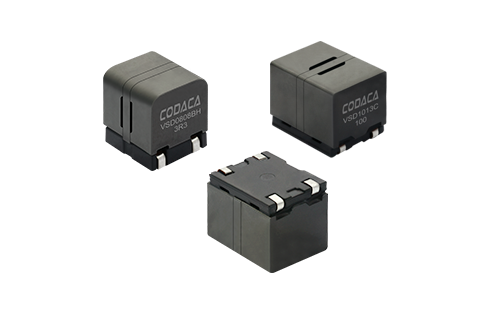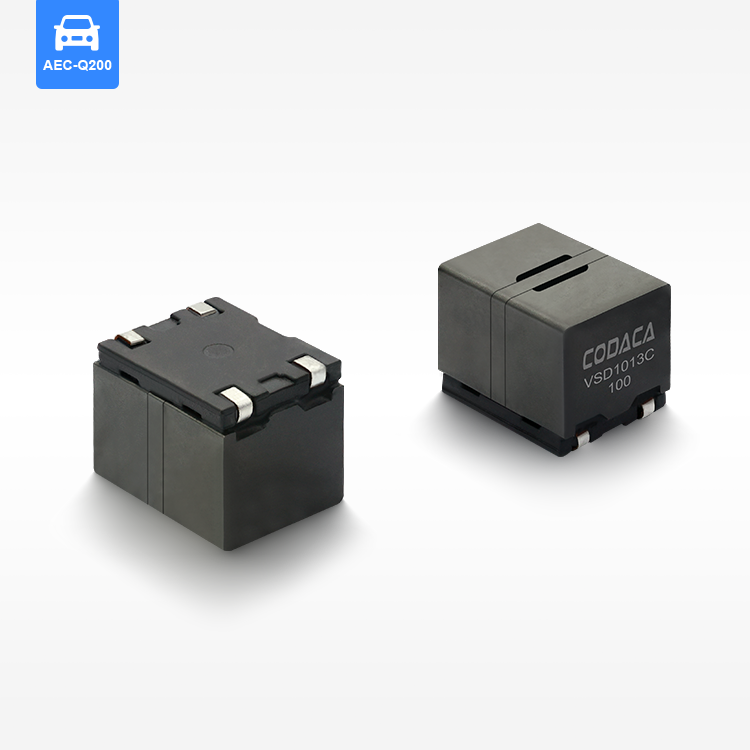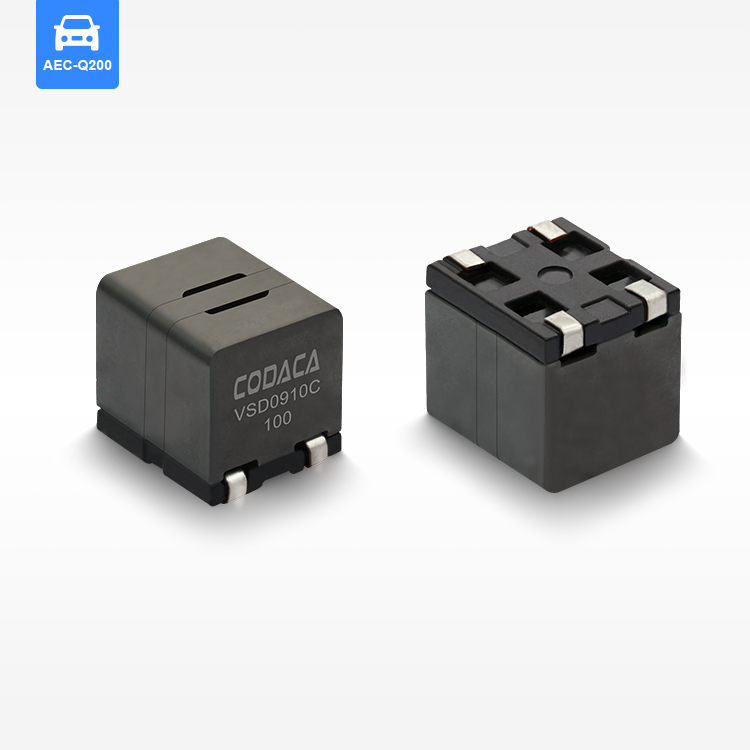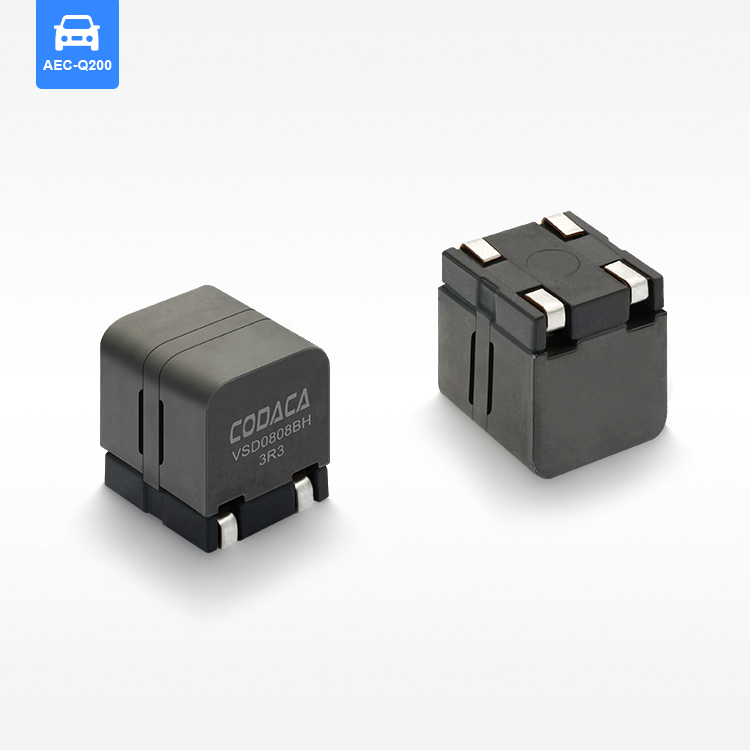Introduction
Automotive-grade inductors are specialized electronic components designed to meet the rigorous standards required by the automotive industry. Unlike standard inductors found in non-automotive Applications, these components must withstand extreme temperatures, vibrations, and high humidity levels typical in automotive environments. Their robust construction ensures reliability and longevity, crucial for maintaining vehicle performance and safety.
In digital amplifiers, automotive-grade inductors play a vital role in filtering electrical noise and managing power flow. They help maintain signal integrity by smoothing out fluctuations in voltage and current, ensuring high-quality sound output. This is particularly significant in modern vehicles, where the demand for high-fidelity sound systems continues to rise, necessitating components that can handle complex electronic signals.
The VSD Series epitomizes the advancements in automotive-grade inductors with its innovative design tailored for sound system applications in vehicles. This series features exceptional specifications, such as high saturation current and minimal temperature rise, ensuring optimal performance. Its benefits extend to enhanced power efficiency and reduced electromagnetic interference, which are crucial in automotive sound systems. By integrating such high-performance inductors, manufacturers can deliver superior audio experiences in vehicles, setting new standards for in-car entertainment solutions.

Key Features of the Best Automotive-grade Inductors for Digital Amplifiers
When selecting automotive-grade inductors for digital amplifiers, certain design specifications are critical. These inductors must be compact in size, lightweight, and constructed from durable materials. Typically, such inductors are crafted from materials like Mn-Zn ferrite core and flat wire, which enhance their resilience to harsh automotive environments. The use of flat wire, as seen in models like CODACA's automotive-grade inductors for digital amplifiers VSD series, not only minimizes DC resistance but also allows for a higher mounting density by improving the inductor's structural design.
Performance metrics such as current ratings, inductance values, and efficiency are essential to evaluate. High current ratings ensure that the inductor can handle the demands of automotive audio systems, while precise inductance values and high efficiency contribute to optimal performance.

In the context of audio applications, the right automotive-grade inductor can significantly enhance sound quality and amplifier efficiency. These inductors help in managing power efficiently and filtering signals to prevent electromagnetic interference, resulting in clearer sound output. By choosing inductors tailored to the specific demands of automotive sound systems, manufacturers can ensure superior audio performance despite the challenging conditions of automotive environments.
Top Brands Manufacturing Automotive-grade Inductors
When it comes to automotive-grade inductors, several leading manufacturers have established themselves as industry pioneers. Among these, companies like TDK, Murata, and Vishay have carved a significant market presence. TDK, originating in Japan, has been a longstanding figure in the electronics industry since 1935, recognized for its innovations in magnetic Products. Murata, founded in 1944, is a global leader in the production of electronic components, revered for its advanced technology and extensive research initiatives. Vishay, on the other hand, with its roots dating back to 1962 in the United States, has become a key player known for its comprehensive range of passive components.
A comparative analysis of these brands reveals distinct differences in their offerings. TDK's inductors are renowned for their compact design and high efficiency, often employed in high-frequency applications. Prices can vary significantly depending on the specific model and application. Murata focuses on innovation, providing products that offer excellent performance in demanding environments, including energy efficiency and compact design, tailored for automotive audio systems.Vishay has focused on developing and manufacturing high-quality power inductors serving global clients. CODACA delivers a broad spectrum of inductors that cater to diverse requirements, often offering competitive pricing while maintaining quality, making them suitable for various digital amplifiers in automotive settings. These variations cater to different customer needs and applications, ensuring that manufacturers offer solutions tailored to the specific demands of a digital amplifier.
Critical Applications for Automotive-grade Inductors in Digital Amplifiers
Automotive-grade inductors play a crucial role in in-car audio systems by ensuring sound integrity regardless of external conditions. These inductors are engineered to deliver consistent performance, minimizing distortions caused by fluctuating voltage and temperature variations. In high-end audio systems, their use is pivotal; they act as filters and stabilizers that maintain the audio signal's purity. This becomes particularly essential as vehicles transition into complex multimedia environments where sound quality is paramount.
In terms of amplifier performance, automotive-grade inductors have a significant impact as highlighted by numerous case studies and expert analyses. For instance, experts argue that the right inductor enhances power efficiency and reduces electromagnetic interference, leading to clearer sound outputs. According to a study from Electronics Symposium, incorporating advanced inductors in digital amplifiers can improve their efficiency by up to 20%, thereby not only enhancing audio quality but also boosting the overall energy management of the vehicle's electrical system. Such metrics underscore the importance of selecting the right inductor for optimal amplifier performance in demanding automotive environments.
Selection Criteria for the Best Automotive-grade Inductors
When selecting automotive-grade inductors, voltage ratings and capacities are crucial factors that determine their reliability and performance. Inductors must be able to handle the voltage load of an automotive system without compromising efficiency. High voltage ratings ensure that the inductor can function effectively, particularly in systems where voltage spikes are common, thus preventing operational failures and extending the device's lifespan. For example, typical automotive-grade inductors are designed to cope with voltages ranging from 12V to 48V, depending on the application.
Temperature resistance and longevity are also vital for inductor performance in the demanding automotive environment. Inductors must withstand extreme temperature fluctuations, from scorching heat to freezing cold, without losing functionality. Materials used in these inductors are selected for their ability to endure such temperature changes over long periods, thereby minimizing the risk of device failures. This durability is essential in maintaining the reliability of automotive electronics throughout their lifecycle.
Ease of integration in circuit design should not be overlooked when choosing inductors. The selected inductors must offer versatility and be compatible with existing systems, facilitating seamless integration without extensive modifications. This involves choosing inductors with standard packaging sizes and connection interfaces, which simplifies the implementation process. Additionally, inductors that support various mounting options can significantly streamline the design phase, reducing both time and engineering costs.
Market Trends: The Future of Automotive-grade Inductors for Digital Amplifiers
Emerging technologies are significantly shaping the design of automotive-grade inductors. Advancements in material science, for instance, are paving the way for more efficient and durable inductors that can withstand harsh automotive environments. This evolution is fueled by the demand for higher performance and reliability in vehicles.
Moreover, future innovations are expected to revolutionize inductor design, with potential shifts in consumer demand driving these changes. Regulatory updates may also dictate the integration of new materials and technologies, encouraging manufacturers to adopt eco-friendlier and more efficient practices. As the automotive industry advances, such trends may lead to a new generation of inductors that align with the growing emphasis on sustainability and performance.
FAQ
What makes automotive-grade inductors different from standard inductors?
Automotive-grade inductors are built to withstand extreme temperatures, vibrations, and high humidity, which are common in automotive environments. They offer enhanced reliability and longevity compared to standard inductors.
Why are automotive-grade inductors important in digital amplifiers?
These inductors manage power flow and filter electrical noise, maintaining signal integrity and ensuring high-quality sound output, which is crucial for automotive sound systems.
Which materials are commonly used in automotive-grade inductors?
Commonly used materials include Mn-Zn ferrite core and flat wire, known for durability and enhancing performance in harsh environments.
How do automotive-grade inductors enhance sound quality?
They filter signals to prevent electromagnetic interference and manage power efficiently, resulting in clearer sound output.
What factors should be considered when selecting automotive-grade inductors?
Key factors include voltage ratings, temperature resistance, ease of integration, and compatibility with existing systems.
Table of Contents
- Introduction
- Key Features of the Best Automotive-grade Inductors for Digital Amplifiers
- Top Brands Manufacturing Automotive-grade Inductors
- Critical Applications for Automotive-grade Inductors in Digital Amplifiers
- Selection Criteria for the Best Automotive-grade Inductors
- Market Trends: The Future of Automotive-grade Inductors for Digital Amplifiers
-
FAQ
- What makes automotive-grade inductors different from standard inductors?
- Why are automotive-grade inductors important in digital amplifiers?
- Which materials are commonly used in automotive-grade inductors?
- How do automotive-grade inductors enhance sound quality?
- What factors should be considered when selecting automotive-grade inductors?




